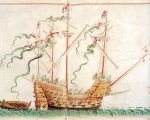
In this week’s Claire Chats video talk, I conclude my look at Tudor travel and transport by examining how Tudor people travelled by water.
[Read More...]
In this week’s Claire Chats video talk, I conclude my look at Tudor travel and transport by examining how Tudor people travelled by water.
[Read More...]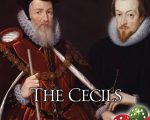
This month in Tudor Life Magazine, we have another of our dynasty features – this time we focus on the Cecils. Of course, no December magazine would be any good without a Christmas section packed with Tudor fun, games and even recipes. It’s a fun one, so do enjoy!
[Read More...]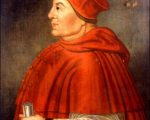
As today is the anniversary of Cardinal Thomas Wolsey’s death on 29th November 1530, I thought today’s “Throwback Thursday” treat could be Conor Byrne’s article on the life of Wolsey…
Thomas Wolsey was born between 1470 and 1473 in Ipswich, Suffolk. He was the son of Robert and Joan Wolsey. Robert owned a tavern in the parish of St. Mary at the Elms in Ipswich. Traditionally, Wolsey’s father has been identified as a butcher and cattle dealer. Thomas Wolsey’s humble origins proved a source of mirth to his critics during his long career. During his childhood and adolescence, Wolsey attended school in Ipswich and later studied at Magdalen College, Oxford, graduating with BA in 1486 when he was about fifteen years old. A decade later, he was ordained as a priest in the parish church of St. Peter in Marlborough. The year before, he graduated with MA. For a short period, Wolsey served as master of Magdalen School and, later, as dean of divinity.
[Read More...]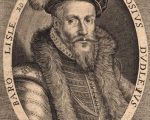
Ambrose Dudley was born the fourth son of John Dudley, Duke of Northumberland, and his wife, Lady Jane Guildford. Ambrose came from an exceptionally large family; he had twelve siblings. The family were renowned for their Protestant zeal: Ambrose’s sister, the Countess of Huntingdon, promoted her Protestantism by opening a school in the north of England for young gentry women. Among her pupils was Lady Margaret Hoby, a noted diarist whose pious daily accounts survive to this day. Much of her diary reflected her strict, daily, religious observances, with little information regarding her personal life. Similarly, Ambrose’s father was a prominent reformer during the reign of Edward VI. He was ultimately executed for his involvement with promoting Lady Jane Grey as queen through lobbying the ailing king Edward VI for support; in violation of the former king Henry VIII’s decreed will.
[Read More...]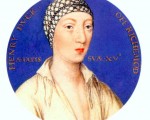
26th November:
1533 – Henry Fitzroy, the Duke of Richmond and Somerset, married Lady Mary Howard at Hampton Court Palace. Fitzroy was the illegitimate son of Henry VIII by his mistress Elizabeth (Bessie Blount) and Mary was the daughter of Thomas Howard, the 3rd Duke of Norfolk, and the cousin of Anne Boleyn.
1542 (26th or 27th November) – Death of Robert Radcliffe, 1st Earl of Sussex, courtier, soldier and Lord Great Chamberlain of England. He was buried at St Laurence Pountney Church in London, but then moved to Boreham in Essex. Radcliffe was made Lord Great Chamberlain of England for life on 3rd May 1540 for his loyal service to Henry VIII.
1546 – Baptism of Sir Giles Fletcher the Elder, diplomat, member of Parliament and author, in Watford, Hertfordshire. Fletcher was the son of Richard Fletcher, Church of England clergyman, and his wife, Joan. Fletcher is known for his poetical work, “Licia” (1593), but his other works included the Latin pastorals Poemata varii argumenti, the poem De literis antiquae Britanniae and the account of his travels as diplomat, “Of the Russe Common Wealth. Or, Maner of gouernement of the Russe emperour, (commonly called the Emperour of Moskouia) with the manners, and fashions of the people of that countrey”. He was the father of the poet Sir Giles Fletcher the Younger.
1585 – Executions of Hugh Taylor, Catholic priest, and his friend Marmaduke Bowes at York. They were both hanged, and were the first men executed under the 1585 statute which made it treason to be a Jesuit or seminary priest in England, or to harbour such a priest. Both men were beatified in 1987.
1612 – Death of Sir Thomas Walmsley, Judge and Justice of the Common Pleas, at his home at Dunkenhalgh in Lancashire. He was buried at Blackburn.

This week’s Sunday brainstretcher is a crossword puzzle on events that happened in the month of November in Tudor times – coronations, deaths, executions, marriages, speeches…. So, print out the puzzle by clicking on the link or image, grab yourself your favourite snack and drink, make yourself comfortable, and let’s go! Good luck!
[Read More...]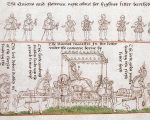
In this week’s Claire Chats video talk, I talk about how medieval and Tudor people got around. What modes of transport were available to them and how long did they take?
[Read More...]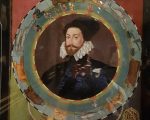
On this day in history, 20th November 1591, Sir Christopher Hatton, Elizabeth I’s Lord Chancellor and favourite, died aged fifty-one at Ely Place in London.
Members can read more about Sir Christopher Hatton’s life in Alex Taylor’s excellent article on him, but here are some photos I took of an interesting panel at the National Portrait Gallery. You can read a description of it in the third photo.
[Read More...]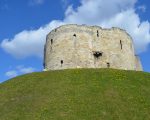
Thank you so much to Kate Cartwright for alerting me to this news. On Friday 30th November, between 11am and 12.30pm, the Bishop of Middlesbrough, the Rt Rev Terence Drainey, is going to be unveiling a plaque in honour of Robert Aske, a lawyer who was one of the leaders of the Pilgrimage of Grace Rebellion of 1536, outside Clifford’s Tower in York.
[Read More...]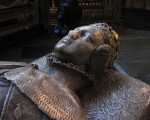
19th November:
1563 – Robert Sidney, 1st Earl of Leicester, courtier, patron of the arts and poet, was born at Penshurst in Kent. Sidney was the second son of Sir Henry Sidney and his wife, Mary (née Dudley), daughter of John Dudley, Duke of Northumberland. It was discovered that Robert was a poet, like his more famous brother Philip, when his notebook came to light in the library of Warwick Castle in the 1960s. The notebook contained a collection of over sixty sonnets, pastorals, songs and shorter pieces written in the 1590s.
1564 – Death of Lord John Grey, youngest son of Thomas Grey, 2nd Marquis of Dorset and courtier. Grey was arrested with his brothers, Thomas and Henry (Duke of Suffolk and father of Lady Jane Grey), in 1554 for their involvement in Wyatt’s Rebellion. Thomas and Henry were executed, and although John was condemned to death, he was released and pardoned due to the intercession of his wife, Mary, sister of Anthony Browne, Viscount Montagu.
1566 – Death of Reynold Corbet, member of Parliament and judge. He was buried at Stoke upon Tern in Shropshire. Corbet’s offices included recorder of Shrewsbury, Justice of the Peace for Shropshire, a member of the Council in the Marches and Puisne Justice of the Queen’s Bench.
1584 – Death of William Bendlowes, member of Parliament, Serjeant-at-Law and Law Reporter. He was buried at Great Bardfield in Essex, where his monumental brass can still be seen today. Bendlowes reported on court cases from the period 1534-1579.
1587 – Death of Henry Vaux, poet, Catholic recusant and priest harbourer, of consumption at Great Ashby, the home of his sister, Eleanor Brooksby. Vaux was sent to Marshalsea prison after being arrested in November 1586 for offering accommodation and assistance to Catholic priests. He was released in May 1587 due to ill health.
1590 – Death of Thomas Godwin, physician and Bishop of Bath and Wells, at Wokingham in Berkshire, his birthplace. He had retired there due to ill health, and was buried in the local church. Elizabeth I chose Godwin as one of her Lent preachers, and he served in that post for eighteen years.
1604 – Death of Richard Edes, Dean of Worcester, royal chaplain and court preacher, at Worcester. He was buried in Worcester Cathedral. Edes was a royal chaplain to Elizabeth I and James I, and had just been appointed to work on a new version of the English Bible when he died.
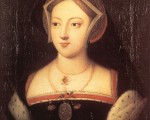
Mary Boleyn, daughter of Thomas Boleyn and Elizabeth Howard, and sister of Queen Anne Boleyn, has been a popular subject for both fiction and non-fiction, but she is quite an enigma in reality. Out of what we do actually know about her, how much do you know? Test yourself with this fun quiz. Good luck!
[Read More...]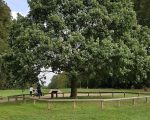
On 17th November 1558, according to tradition, Elizabeth, daughter of King Henry VIII and Queen Anne Boleyn, was sitting under an old oak tree in the parkland around the palace of Hatfield, reading a book. She was disturbed by lords of the council who had travelled to Hatfield to give her news of her half-sister Queen Mary I’s death and her subsequent accession.
[Read More...]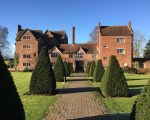
In her very first roving reporter video, Philippa Lacey Brewell visits the beautiful moated manor house, Harvington Hall.
[Read More...]
Some time ago, we asked for feedback on the Tudor Society. We asked what people would like to see on the site. It was very encouraging because the feedback showed that we were offering everything that people wanted, except for just one thing: virtual tours of historic places. We racked our brains over how we could offer this to our members and then Claire realised that we could get our good friend Philippa Lacey Brewell involved. Philippa runs British History Tours and her expertise is historical places, so asking for her help was a no-brainer! Fortunately, Philippa agreed to help us and will be giving us virtual tours (or as close to a virtual tour as she can get!) of historical places linked to the Tudors. She will be doing one a month for us – yay!
[Read More...]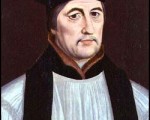
Stephen Gardiner’s date of birth is not known, with some saying 1483 and others saying 1493 or 1497, but he was born in Bury St Edmunds in Suffolk. His father was William Gardiner (some say John Gardiner), a cloth merchant and a mercenary hired during the War of the Roses. According to Welsh accounts of the 1485 Battle of Bosworth, it was “Wyllyam Gardynyr” who killed King Richard III with a poleaxe. Sir William Gardiner later married Helen Tudor, a woman said to have been the illegitimate daughter of Jasper Tudor, uncle of King Henry VII.
As a young man, Gardiner met the famous humanist scholar, Desiderius Erasmus, in Paris and he studied at Trinity Hall, Cambridge. He received the degree of Doctor of Civil Law in 1520 and of Canon Law in 1521, and went on to work for Cardinal Thomas Wolsey as secretary. He met Henry VIII for the first time in 1525 at The More in Hertfordshire for the signing of the Treaty of the More between the King and Francis I of France. Two years later, in 1527, Gardiner and Sir Thomas More worked as commissioners in arranging, with the French ambassadors, a treaty to obtain support for an army against the Holy Roman Emperor, Charles V, in Italy.
[Read More...]
Further to my Claire Chats video talk on Tudor fruit and vegetables, I just had to share this news article which is completely coincidental – life is strange!
In my talk, I mentioned the popular medieval and Tudor root vegetable salsify, a vegetable which was consumed regularly in the UK up until the 19th century but which many Brits today have never heard of. Well, good news! The supermarket chain Waitrose is selling black salsify, grown in Cambridgeshire and Norfolk, and some white salsify, grown in Ayrshire, in 100 of its stores from now until the spring. So, if you’re in the UK, do look out for it and please do let me know if you buy it and try it.
[Read More...]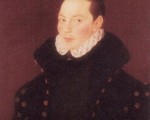
12th November:
1532 – Henry VIII and Anne Boleyn finally left Calais after being delayed by a Channel fog. They landed at Dover on Thursday 14th November. They had been visiting Calais to meet with the French king, Francis I.
1537 – Jane Seymour’s body was taken by chariot from Hampton Court Palace to Windsor Castle.
1554 – The opening of Mary I’s third Parliament. At this Parliament, a bill was passed allowing the exiled Cardinal Reginald Pole to return to England as papal legate.
1555 – Mary I’s Parliament re-established Catholicism in England.
1555 – Stephen Gardiner, Bishop of Winchester and Mary I’s Lord Chancellor, died. Gardiner crowned Mary I Queen of England at her coronation at Westminster Abbey on the 1st October 1553, and helped Mary to restore Catholicism and overturn the annulment of her parents’ marriage, making her legitimate. He was also instrumental in the marriage negotiations between Mary and Philip II of Spain, and married the couple at Winchester Cathedral on the 25th July 1554. He was laid to rest at Winchester Cathedral in what is now known as the Bishop Gardiner Chantry Chapel.
1576 – Death of Sir Edward Saunders, judge. He was buried at Weston under Wetherley, Warwickshire. Saunders’ offices included Serjeant-at-Law, Recorder of Coventry, Chief Justice of the King’s Bench and Chief Baron of the Exchequer.
1586 – A delegation of forty MPs and twenty peers presented Elizabeth I with a petition demanding that “a just sentence might be followed by as just an execution” in the case of Mary, Queen of Scots.
1595 – Death of Sir John Hawkins, merchant, shipbuilder, navigator, explorer, slave trader and naval commander, at Puerto Rico on a voyage, with Sir Francis Drake, which aimed to capture Panama. He was buried at sea. Hawkins is known for being the chief architect of Elizabeth I’s navy, and he was knighted for gallantry after serving as Vice-Admiral during the Spanish Armada.
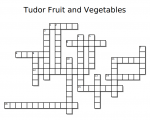
This Sunday’s puzzle tests your knowledge of Tudor fruit and vegetables. You should find this very easy if you have watched this week’s Claire Chats on the topic.
[Read More...]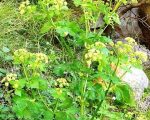
In today’s Claire Chats video, I talk about the fruit and vegetables that were enjoyed in the Tudor period.
[Read More...]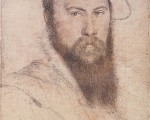
Throwback Thursday is all about sharing things that you might have missed in the Tudor Society archives or that you might enjoy revisiting. Today’s treat is our Tudor Quotes and Poetry Quiz from 2014. So, grab yourself a drink and snack, make yourself comfy, and let’s get testing your Tudor knowledge…
[Read More...]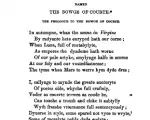
John Skelton’s birthdate is unknown; however, historians have put forward suggestions that a date in the early 1560s is the most likely. Additionally, it is thought that he was born in the North of England. His family name may be derived from several locations named ‘Skelton’ in Yorkshire, however unfortunately for historiography, the majority of Skelton’s upbringing is wrapped in a mystery as a result of scarcely any remaining documents surviving that mention him. A significant proportion of Skelton’s life, and personality, is instead found in his poetry, which survives in manuscript form and has been seriously analysed by historians.
[Read More...]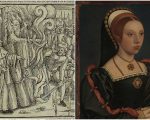
Just to let you know the details of this month’s live chats. Our informal chat on the topic of Religious persecution and martyrs (such a cheery topic!) will take place on Friday 16th November and our expert live chat with author and founder of the Tudor Society, Claire Ridgway, is on Friday 30th November.
Both chats will be an hour long and will take place in the Tudor Society chatroom.
[Read More...]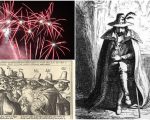
One thing I do miss about living in the UK is the annual fireworks display we used to attend as a family. The annual ritual of putting on warm clothes, going out to watch some spectacular fireworks (we lived near a fire college and the firemen did a wonderful job), then coming back to hot chocolate and other warm treats – bliss! Here, where I live in Spain, of course, it’s a normal day and Guy Fawkes doesn’t mean anything to anybody. The only fireworks we have here are the bangers let off when the football results are good or at our village fiesta in January. There’s no colour to them, they just flash and bang – very sad!
[Read More...]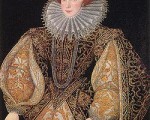
1514 – Mary Tudor, sister of Henry VIII, was crowned Queen of France. She had married King Louis XII at Abbeville on the 9th October 1514. The marriage was rather short-lived, as Louis died on the 1st January 1515, and Mary went on to marry Charles Brandon, Duke of Suffolk.
1520 – Death of Sir Robert Poyntz, courtier, landowner and Vice-Chamberlain and Chancellor of the Household to Queen Catherine of Aragon. He was around seventy when he died.
1530 – Death of Sir John More, lawyer, judge and father of Sir Thomas More. More served as Serjeant-at-Law, Justice of Assize, Justice of the Common Pleas, and also served on the King’s Bench from 1520 until his death.
1605 – Guy Fawkes was caught with thirty-six barrels of gunpowder in the cellars beneath Westminster. The idea was to blow up the House of Lords at the opening of Parliament on the 5th November, and to assassinate King James I.
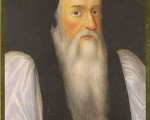
Thomas Cranmer, who served as Archbishop of Canterbury in the reigns of Henry VIII, Edward VI, Queen Jane and part of Mary I’s, is a fascinating Tudor personality. But how much do you know about the man who was burnt at the stake in 1556? Test yourself with this fun quiz.
[Read More...]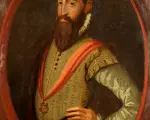
On this day in 1592, Sir John Perrot, Privy Councillor and former Lord Deputy of Ireland, died at the Tower of London. He was buried in the Chapel of St Peter ad Vincula at the Tower.
John Perrot was born between 1527 and 1530 in Pembrokeshire, and was the son of Mary (Berkeley) and Sir Thomas Perrot, although some believe him to have been Henry VIII’s illegitimate son. John’s mother, the pretty Mary Berkeley, had served Henry VIII’s first wife, Catherine of Aragon. The King was a friend of her husband, Sir Thomas Perrot, a keen huntsman, and historian Philippa Jones believes that Henry VIII began an affair with Mary after noticing her when he came to visit and hunt.
[Read More...]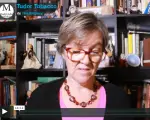
Sir Walter Ralegh is often credited with introducing tobacco into England after he’d travelled to the New World, but this is a myth. I decided to look into the history of tobacco and research how it came to England and how it became popular.
[Read More...]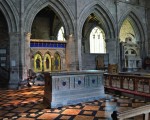
As today is the anniversary of the death of Edmund Tudor, Earl of Richmond and father of King Henry VII, I thought it was fitting to share this article about his life and death…
On this day in 1456, Edmund Tudor, 1st Earl of Richmond and father of King Henry VII, died from the plague at Carmarthen Castle in Wales.
[Read More...]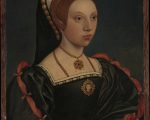
Our expert speaker this month is Claire Ridgway, founder of the Tudor Society, who is currently working on a book about the events of 1541 and early 1542 – “The Fall of Catherine Howard: A Countdown”. Find out who did what and who said what in this talk.
[Read More...]